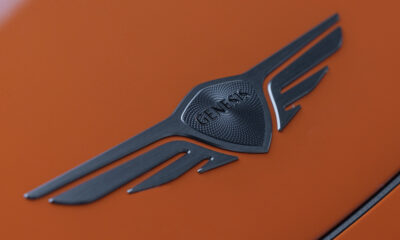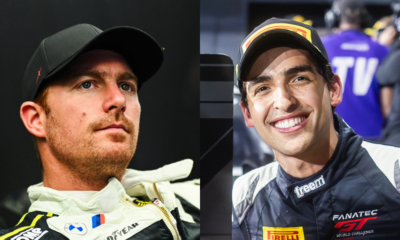Porsche is in “good shape” with the development of its new GT3 car that will arrive on the global customer racing market next year, according to project manager Sebastian Golz.
The German manufacturer is introducing a 992-based Porsche 911 GT3 R to replace the current 991.2 model of the same name that has been active since 2019.
Golz said that extensive track testing, which has taken place at several European circuits including Spa-Francorchamps, Barcelona and Monza, has enabled the GT3 engineering team to get the product in a high-performing and reliable state ahead of its launch.
“We are more or less at the end of the car’s development phase,” Golz told Sportscar365.
“We have already done our endurance running, so the reliability side is proper. We are in good shape. The car is performing well and the baseline is definitely there.
“Now we have time to define how we want to introduce the car setup-wise into 2023.
“This needs a little bit more fine-tuning because we are defining the car for the next years.”
At many of its private tests, Porsche ran the 992-generation GT3 car alongside its 2019 forebear that has achieved several major wins over the last three and a half years.
This exercise enabled the development team to observe the new car’s baseline and quickly identify areas for improvement.
Notable victories earned by teams running the 2019 Porsche GT3 have included GPX Racing and ROWE Racing at the TotalEnergies 24 Hours of Spa and Manthey Racing at the Nürburgring 24.
“We have a high target to meet,” Golz noted. “The new car must [at] minimum perform on the same level as the current one.
“I think on every test, we joined the new car with the current car. We tested them in the same conditions at the same time, also swapping drivers in between as a reference.
“It was always done on the same theoretical BoP points that we put into the car. And then we drove and were able to compare the driveability, performance, top speed, acceleration.
“This helps you to judge where you are on the new car.”
Golz explained that some aspects of the new GT3 machine, such as some aero components, were tweaked in response to the findings from these side-by-side tests, although the general design has not changed since the drawing board.
“In the beginning, the baseline was really good,” he said.
“The performance was directly there, so we were able to compete directly out of the box. But in the beginning, there are some things that we didn’t think were correct.
“On the top speed side, we had to find out why the car was not [as] competitive like the old one. We found out that there was something wrong on the car, so we recognized it and double-checked with our simulations and the track information we had.
“Then we found the issue, so it was really important to have this reference car on track.
“We saw there must be something wrong and we found out what the issue was, and we changed it so now we’re on the side where we expected to be.
“If you’re alone, it’s maybe due to ambient conditions, the track or tires. You never know clearly what the reason is.
“But if you have a reference car there, you know it must be different, for better or worse.”
The 992 is expected to make its race debut in pre-homologation trim later this year, with Golz identifying the NLS and 24H Series as potential arenas in which it could appear.
Porsche is eager to integrate customers into the closing stages of the testing process, as it checks how the systems work in the hands of independent drivers and teams.
“For them, it’s quite a big honor that they are allowed to drive a car that is not sold to customers yet,” said Golz.
“Some teams are working on a different budget level because they are doing a lot of races but they are not having the big budget from the background to pay for special tools and all those things.
“Is it possible for them to handle everything? If not, maybe we did something wrong. That is why we need this.”

























